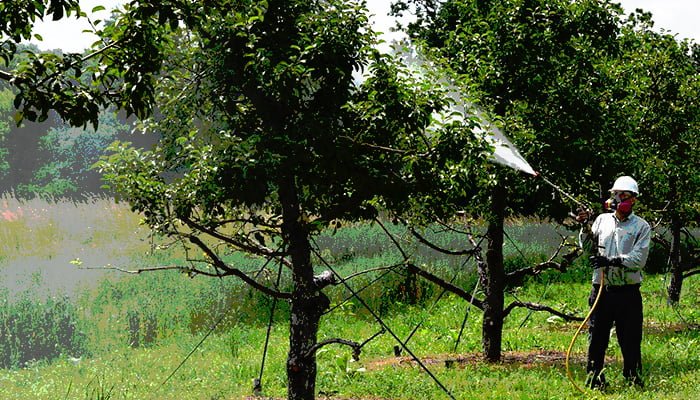It is not uncommon to wonder about ticks; where they live, how long they live, where you’re most likely to get bit, if they fly, etc. In the Hudson Valley, interest in and research on ticks and tick-borne diseases is becoming much more prevalent as our cases of these diseases and our population of ticks continue to increase. Here are some FAQ’s about ticks, and prevention/protection methods to help answer some of your questions.
Q: Do ticks live in trees?
A: Ticks are very rarely found looking for hosts much higher than the level of their preferred natural hosts like; mice, raccoons, dogs, cats, skunks, coyotes, etc. So, they most commonly dwell lower to the ground and do not climb high into trees.
Q: Can ticks fly or jump?
A: No. If a tick is found near a person’s head or neck, it has crawled up their body from the ground to get there. Ticks typically transfer from animals to people when they brush up against places that ticks hide/live. They typically quest for hosts from ground to about knee level on vegetation.
Q: How can I protect my children and pets from ticks on our property?
 A: Keeping your grass cut and all brush piles cleared is very important in eliminating ideal hiding spots for ticks. You can also spray for ticks in your yard. At Red Cedar, we use the most organic and non-toxic insect and pest applications available. We typically spray around the perimeter of your property and begin spraying for ticks in spring, and continue into summer and fall. You can also implement some methods to prevent deer from entering your property (huge tick carriers) like; deer repellent planting, and fencing. Also consider moving backyard features like bird feeders and wood piles to low traffic areas. These can attract other wildlife, which can attract ticks.
A: Keeping your grass cut and all brush piles cleared is very important in eliminating ideal hiding spots for ticks. You can also spray for ticks in your yard. At Red Cedar, we use the most organic and non-toxic insect and pest applications available. We typically spray around the perimeter of your property and begin spraying for ticks in spring, and continue into summer and fall. You can also implement some methods to prevent deer from entering your property (huge tick carriers) like; deer repellent planting, and fencing. Also consider moving backyard features like bird feeders and wood piles to low traffic areas. These can attract other wildlife, which can attract ticks.
Q: How long can a tick survive indoors?
A: It depends on the species, but when it comes to deer ticks, they are the most susceptible to “drying out” indoors. They can only survive a short period of time in atmospheres with low humidity (typically less than 90% humidity). Ticks on moist clothing, say in a hamper, can survive about 2-3 days. Ticks that are unfed will not likely survive the conditions of a typical home for more than 24 hours.
Q: What is the white sheet/white flag test?
A: Prior to spraying or treating your property for ticks, your professional will run some tests to evaluate how high the concentration of ticks is on your property. One method is tick dragging, where a white sheet or “flag” is dragged along the property for a certain amount of time to gauge tick population, as ticks will latch onto the sheet. However, more sophisticated methods have been developed and this method is generally used by researchers.
Q: Are there any type of physical barriers I should add to my landscape plan that prevent ticks from entering?
A: Aside from spraying for ticks, there really are no “physical barriers” to be built that avoid tick entrance. But, creating a visual border between the “safe” and “unsafe” areas can be a great way to remind children and guests not to cross into the “tick zone” (like deeps wooded areas, or areas past where you have sprayed).
Q: What type of weather do ticks survive best in?
A: As mentioned above, ticks generally need humidity to survive. So typically ticks thrive in weather conditions where the temperature doesn’t dip below freezing for an extended period of time. However, it is possible for ticks to still survive below freezing, they just may be more sluggish, or less effective at attaching to hosts.
Q: When I am going into a wooded area, how can I protect myself from ticks?
 A: Clothing barriers are very important when you know you will be in areas with higher populations of ticks. Tucking your socks into your pant legs and tucking in shirts is a good way to eliminate openings that ticks can crawl into to get to your skin. Try your best to avoid brushy areas, tall grasses, and damp areas. Applying insect repellent to exposed skin and clothing is also a good means of protection. Most importantly, do a tick check after your outdoor, woody adventure!
A: Clothing barriers are very important when you know you will be in areas with higher populations of ticks. Tucking your socks into your pant legs and tucking in shirts is a good way to eliminate openings that ticks can crawl into to get to your skin. Try your best to avoid brushy areas, tall grasses, and damp areas. Applying insect repellent to exposed skin and clothing is also a good means of protection. Most importantly, do a tick check after your outdoor, woody adventure!
Ticks and the effects of ticks like Lyme Disease and other very serious tick-borne illnesses, continue to become an increasing problem for people throughout NY, especially in the Hudson Valley. Because of this, being educated on ticks themselves, as well as tick prevention is so important to protect your family and pets. It is estimated that 3/4ths of all Lyme Disease cases occur during activities in and around the home. Ensuring your property is safe for your family can go a long way in protecting from dangerous tick bites. Contact Red Cedar today for you free tick consultation. Now is the time to begin spraying for the season!


